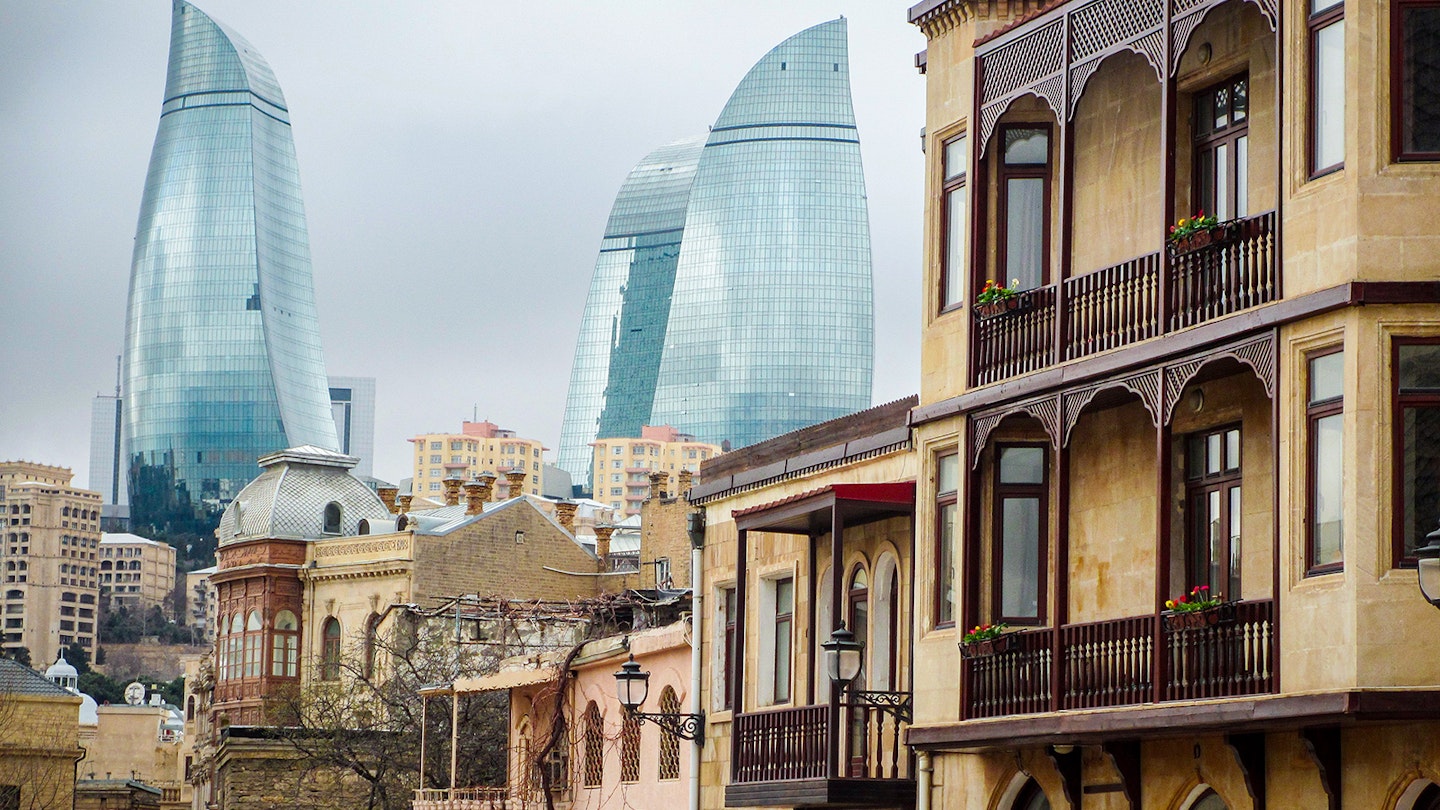Exploring the Architectural Heritage of Baku, Azerbaijan
Known as the ‘City of Winds’, Azerbaijan’s capital is not only one of the world’s breeziest destinations but also boasts an eclectic architectural landscape shaped by various historical influences. From medieval fortifications to lavish palaces of the oil boom era, and striking modern skyscrapers, Baku offers a captivating exploration of its architectural legacy.
Medieval Baku
Two millennia ago, Baku emerged as a significant center of Zoroastrianism, an ancient Persian religion revered for its fire temples. This era is believed to have initiated the construction of the 29m-high Maiden’s Tower, the city’s foremost cultural icon and an essential first stop for any architectural tour. Fortified in the 12th century during the height of the Shirvan region, this sandstone tower, once used as a Zoroastrian fire temple, now stands proud within Baku’s Old City.
The restoration efforts of Baku’s historic quarter at the turn of the 21st century may have been somewhat extensive, yet the 15th-century Palace of the Shirvanshahs, with its intricate murqarna (stalactite vault) doorways and atmospheric mausoleums, provides a fascinating glimpse into a time characterized by continuous conflict among the Persians, Ottomans, and Imperial Russia. Notably, in 1918, the Bolsheviks marked their presence by shooting into an ancient sandstone wall near the palace’s entrance, leaving behind visible bullet holes that remain to this day.
The Oil Boom Years
Baku’s integration into the Russian Empire in 1806 heralded a new era in the city’s development, culminating in the 19th century when the Persians definitively lost control of Azerbaijan following the Russo-Persian War (1826–1828). As the Russian Empire began to tap into the nation’s vast oil reserves, affluent oil barons initiated the construction of extravagant homes and palaces in downtown Baku. A standout is the Ismailiyya building (1913), a Venetian Gothic palace that now houses the Academy of Sciences, built by an oil magnate in memory of his son.
Other notable buildings from this era include the Palace of Happiness, influenced by its former owner’s travels to Venice, the Art Nouveau Azerbaijan State Philharmonic Hall, which was modeled on Monte Carlo’s Casino, and the Secession-style Azerbaijan State Academic Opera and Ballet Theatre, funded by oil tycoon Zeynalabdin Taghiyev, who astonishingly completed it within 10 months, winning a bet against a fellow magnate.
Soviet Era
The architectural narrative of Baku took another fascinating turn following Azerbaijan’s incorporation into the Soviet Union in 1922. Amidst the city’s towering high-rise apartment blocks from this period, unique structures await discovery.
A prime example of Stalinist architecture, the Government House (84 Uzeyir Hajibeyov), completed in 1952, stands as a key landmark. Another remarkable achievement of Soviet engineering, the Baku metro, launched in 1967, features some retro carriages paired with modern stations. The Ulduz station impresses with its futuristic ceiling, while Neftchiler showcases mosaic art celebrating oil workers. Be sure to visit the Nizami station, renowned as the city’s most beautiful metro station, adorned with mosaics illustrating tales from ancient Persian poet Nizami Ganjavi.
If you appreciate socialist realism, the Pearl Cafe (now Mirvari Cafe), built in 1959 and featuring oversized sail-like awnings, represents one of Baku’s best-preserved examples. Fans of Brutalism should not miss the Heydar Әliyev Palace, a striking concert hall that opened in 1972 northeast of the city center. The Museum Centre, once the former Lenin Museum, now houses Baku’s Museum of Independence, and sports a neoclassical colonnade indicating its 1960s origins.
Modern Baku
Azerbaijan commenced its journey towards independence in 1991, leading to a surge in foreign investment. The signing of the multi-billion dollar “contract of the century” for developing the nation’s biggest oilfield marked the initiation of Baku’s second oil boom, resulting in ambitious infrastructural projects that have come to define the city’s skyline.
Diverging from the rigid designs predominant in the last years of the USSR, the Heydar Әliyev Centre, which opened in 2012, was crafted by the distinguished architect Zaha Hadid, embodying a forward-looking vision for Azerbaijan. Following closely was the unveiling of the Flame Towers in 2013, symbolizing Baku’s connection to its fiery heritage and featuring a stunning LED system that gives the impression of flickering flames at night.
Located by the waterfront, the striking Crystal Hall, built for the 2012 Eurovision Song Contest, is emblematic of modern design. In preparation for the 2015 Baku European Games, Baku saw the emergence of additional ultra-modern sports venues, including Baku Olympic Stadium and the Aquatic Palace, with the Heydar Әliyev Arena redesigned to incorporate a crown-shaped LED cover similar to Crystal Hall, creating a sparkling effect at night.
Noteworthy additions to Baku’s futuristic skyline comprise the Carpet Museum (2014), which resembles a giant half-rolled carpet, the impressive SOCAR building (2016), conceived around the themes of wind and fire, and the waterfront Crescent Development, resembling an upside-down crescent moon and due for completion in 2020. Moreover, Baku’s skyline is marked by controversy, particularly with the unfinished Trump Tower, a sail-shaped structure that was left incomplete in 2015 by its then-owner Donald Trump.





